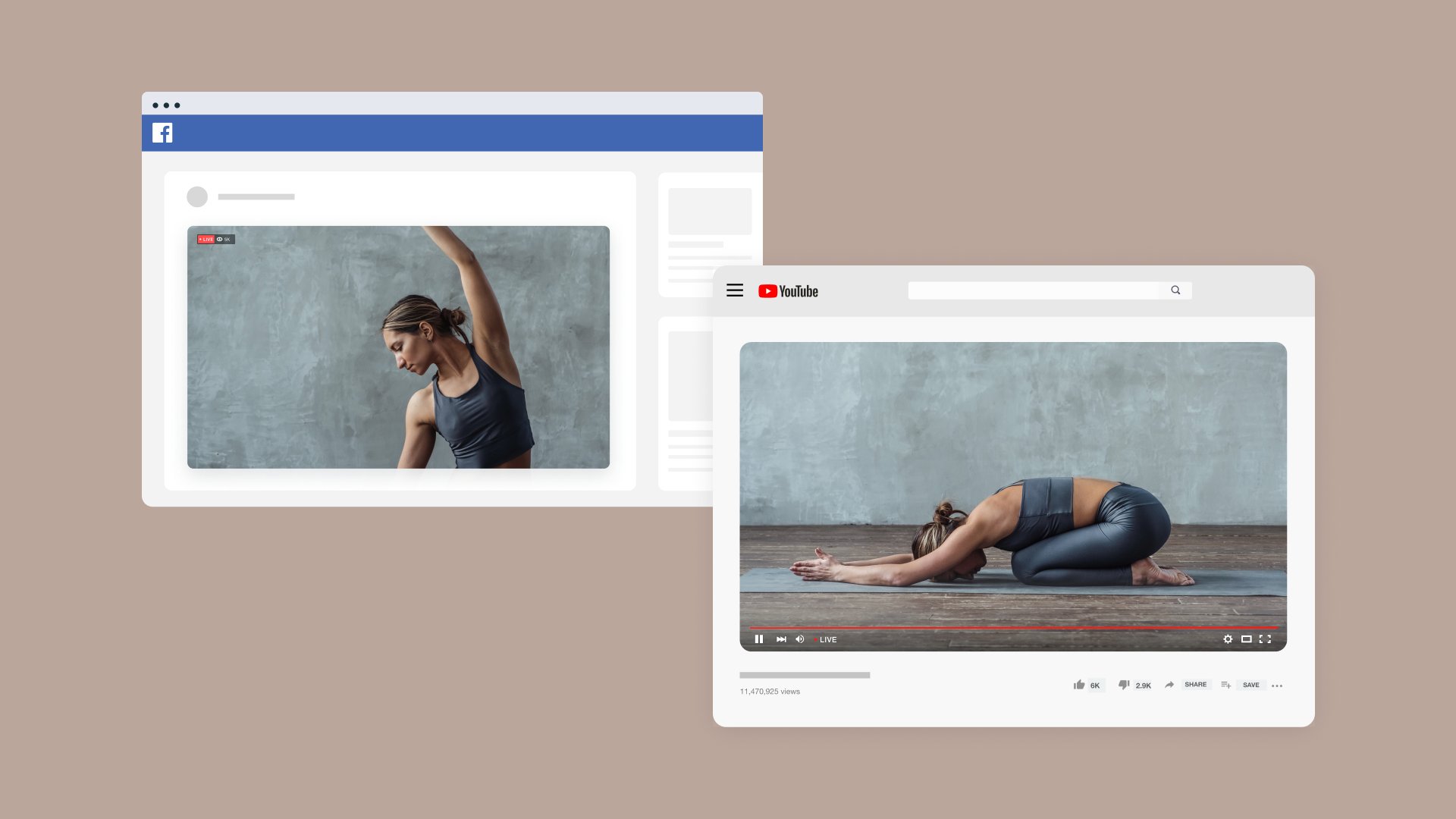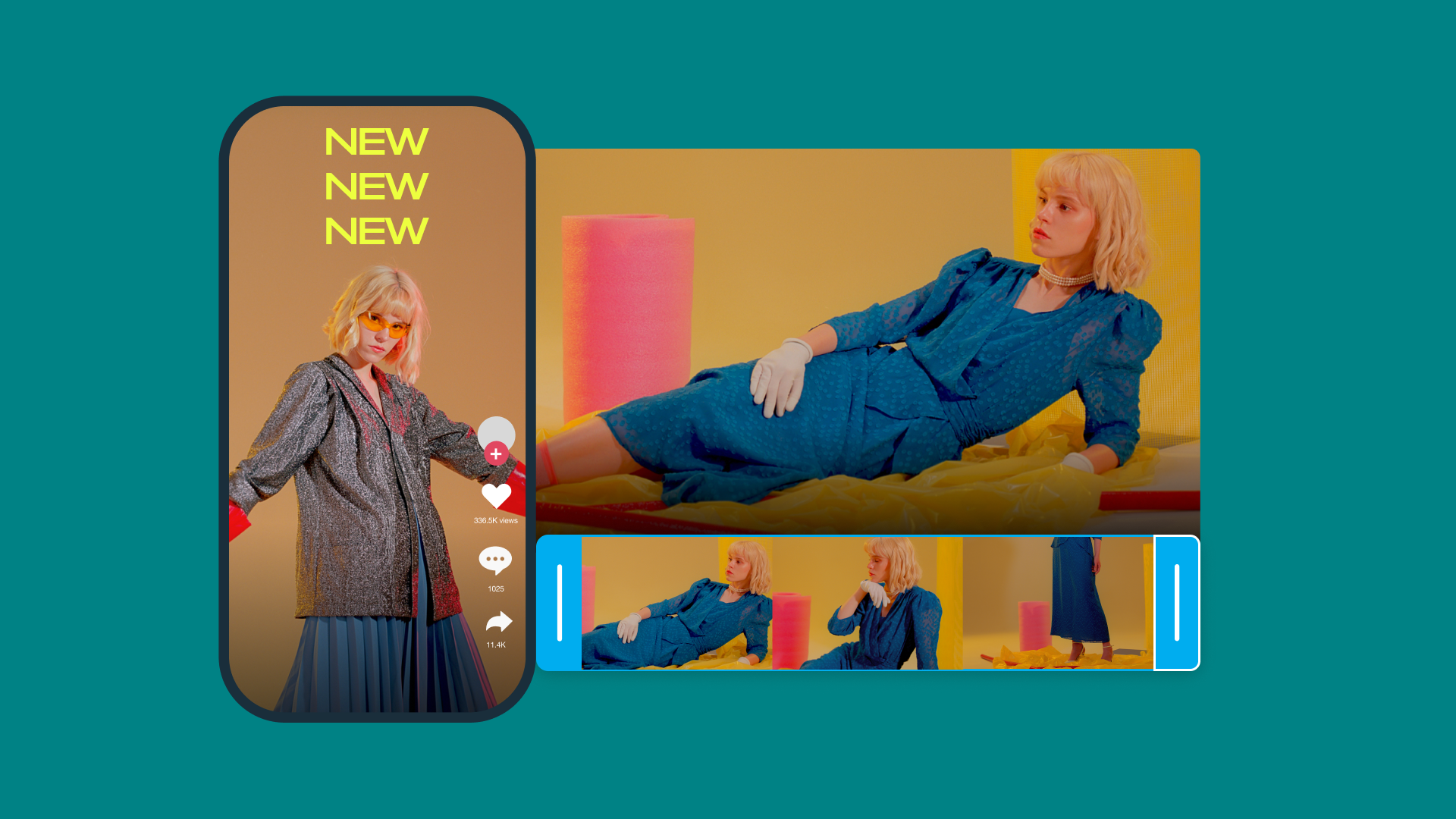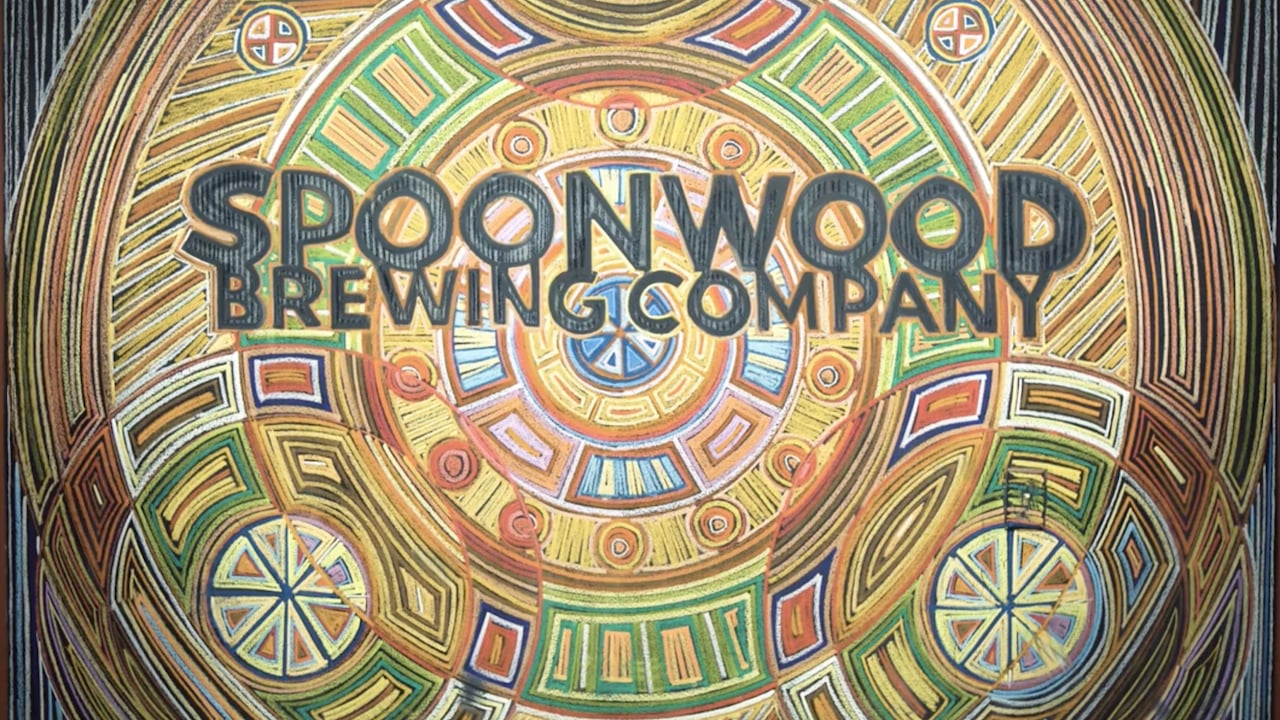While Large Language Models (LLMs) like ChatGPT and Perplexity don't crawl the web in the traditional sense, AI search engines use them to synthesize answers from multiple sources. The brands that consistently get cited are those whose content is deemed authoritative, accurate, and easily extractable by these AI systems. Answer Engine Optimization (AEO) helps you do that—and video is the missing piece.
While traditional SEO remains essential, this shift is why AEO focuses less on ranking and more on being cited across the sources LLMs rely on. While conventional SEO remains vital, AEO represents an evolution, offering a complementary and often faster route to visibility, especially through video.
If you create video content that LLMs want to quote, you can take advantage of less-crowded spaces to show up in more answers, more often.
What is Answer Engine Optimization?
Answer Engine Optimization (AEO) is the process of optimizing content so that your brand appears—by name and link—in the answers generated by multimodal LLMs (models that can understand and develop content across text, images, and video), such as ChatGPT and Google’s AI Overviews.
AEO is a strategic shift from conventional SEO. Instead of aiming for a top-three ranking on search engines like Google or Bing, AEO is focused on being cited directly within the answers generated by Large Language Models. In other words, you’re optimizing for the share of answers—how often you’re mentioned or cited across the pages and videos AI engines pull from.
Here are a few differences between AEO and SEO:
AEO | SEO | |
Ideal result | Earn repeated citations across multiple sources that LLMs summarize | Earns a top ranking for a keyword on search engines like Google or Bing |
Search query | Longer, specific, and conversational chat-based queries, like “What’s the best payment processing API for a B2B SaaS company in Europe?” | Short, broad queries, such as “best payment processing API” |
Mechanism | LLMs run a fresh web search, retrieve information on the topic from multiple sources, and synthesize an answer with links | Search engines rank pages, which users click |
Content strategy | Head and tail content:
| Long-form guides, comparison pages, and content clusters |
AEO isn’t replacing SEO; it’s complementing it. SEO is still the feeder—Google’s slice of the pie remains the same, but the pie is bigger. AEO changes the goal from “rank first” to “be cited as often as possible.” Ideally, keep doing SEO to earn credible pages that LLMs can retrieve, and add AEO to earn more citations.
How the rise of AEO benefits your business
With LLMs redefining what success means for search, it’s now possible to improve visibility faster than traditional SEO. Here’s what the shift means for your business:
- Video can win through utility, not just entertainment: LLMs synthesize answers, so your job isn’t to go viral, but to be citable. Even if you don’t get a lot of views on YouTube or Vimeo, LLMs will share your video in their answers, and you’ll receive visibility in ChatGPT, Google Search, and other AI platforms.
- Faster route to visibility while the playing field levels: LLMs can pick up new mentions immediately, which means you can see results in days rather than months. A few authentic, value-packed videos can move the needle, even if you’re a smaller company with less domain authority (DA).
- Your help center becomes a growth channel: Treat the most common FAQs and setup guides like acquisition pages. One focused video per topic—with clear titles, chapters, and descriptions—make your content easier to cite.
- “Boring” beats crowded: Video can help you earn citations quickly, especially in “less glamorous” spaces. Instead of making videos in saturated industries like food, travel, or fashion, create highly specific videos in less-crowded niches to avoid competition and provide solutions to questions that don’t have answers. The less entertaining your product is, the better it is to do video.
Short videos in help center docs will get cited more, especially for product queries. Start now and you'll own the long tail when LLMs understand video better.
How AI answer engines and LLMs work
Large language models generate text by predicting the next word in a series based on learned patterns. But most modern AI models—like ChatGPT, Claude, and Perplexity—don’t answer from memory alone. In addition to LLMs, they use RAG (retrieval-augmented generation): run a quick web search, retrieve info from a set of sources, and summarize them to provide answers.
For example, if you search for “what’s the best project management software,” the LLM then runs a search for “best project management software” and summarizes the results. This can utilize data that is less than a day old versus data that is 1 year or older.
In practice, you’ll typically find three modes:
- Closed-book (pre-trained knowledge only)
- Retrieval-augmented generation (where AI models can summarize new sources)
- Hybrid (combine several AI models, LLMs, and potentially vid-LLMs in the future)
The role of traditional search engines in AEO
AI chat is converging with search: LLMs pull information from Google and other search engines, and even ChatGPT provides prominent links and maps—driving more referral traffic from chat. That means traditional SEO still provides answers for AI models through credible articles, reviews, community posts, and help docs that rank highly to become sources in citations.
So, your SEO efforts still matter, but the goal shifts. Ensure you’re present in the pages that already appear and provide those pages with content that’s easy to cite, such as a short video embed. For something like “best project management software,” aim for LLMs to mention you in answer roundups and consider a 90–120-second video in your help center that AI models can reference.
How user behavior changes in LLMs vs. traditional search engines
Traditionally, search engines involve a series of independent queries. With LLMs, it becomes a conversational chat with an AI bot that has a memory. Users ask longer, specific questions and keep refining and following up in the same thread. This creates multiple opportunities for citations as the AI model re-fetches sources after each follow-up.
For AEO, that means you can create answerable assets for a cluster of related questions, including utility-first videos and companion documentation that solve unanswered queries. This covers all bases, so you’re eligible for citations as the conversation moves from broad to specific.
5 key strategies for implementing AEO
The highest-leverage combination when implementing AEO is optimizing the head and the tail. Together, they dramatically improve the chances of LLMs finding you: through third-party mentions (head) and owned content (tail).
As trends go, social media and UGC are rising. “Boring” topics can be leveraged, and AI models will eventually be able to read video transcripts. Things get crowded in traditional SEO, where you need DA and topical authority to rank highly in search results. However, if you opt for a less-congested niche topic, you can make the tail larger and follow up with specifics, thereby optimizing your videos for AEO.
Most brands don't lack SEO, but they're underinvesting in AEO and video. A 90-second screen share or Loom, titled the question and embedded in the doc, is enough for LLMs to surface it.
Here are a few more strategies to consider when implementing AEO:
1. Conduct keyword research for question-based queries
The more LLM citations mention your product, the more likely it is that the LLM will suggest your product. Targeting those specific keywords, especially for question-based queries, makes your product more “citable” when AI models generate answers.
First, create support tickets, sales call notes, and threads on Reddit, Quora, and LinkedIn over the last 2–3 months. Rewrite each recurring problem as a question you would ask and include the limitations people mention.
For example, instead of “project management software,” go for “Which enterprise project management tool integrates with Slack?” Prioritize questions and group them into clusters as a reference for video categories later.
2. Make utility-first videos for each question
LLMs cite sources that provide clear solutions, not the longest article or video. Short, topic-oriented videos are easy to cite, while competition is lower in less saturated spaces. Create Loom videos or screen recordings titled exactly like the query, and show the solution in the first 20–30 seconds. Add an accurate description, title, and chapters to help AI models understand the video content.
Publish the video on Vimeo and repurpose it for YouTube and social media platforms. You can also embed the same clip in help center documentation to repeat content across more channels. For instance, a 60-second “How to use ABC project management tool within Slack?” embedded clip with accompanying information becomes the obvious citation when a user asks that precise question.
3. Focus on earned media
AI platforms like ChatGPT summarize multiple sources, especially repeated, authentic, off-site mentions—think UGC, affiliates, and videos. These grow your share of answers faster than a single page in your own domain.
For UGC, answer relevant Reddit and Quora threads with a concise solution, disclose your affiliation, and add your video clip as proof. For example, “This product solves X and skips the hassle of Y—here’s a 60-second walkthrough.”
UGC on Reddit, Quora, and LinkedIn will keep showing up in LLM answers, so helpful, human-made videos there will win more citations.
4. Use structured data markup
Many LLMs begin their own research with a quick web search. Schema makes your page easier for them to understand and feature, so they’re more likely to include your brand in their answers. Add FAQ schema to Q&A pages, “HowTo” wherever you have clear steps or listicles, and “VideoObject” for embedded clips (with a concise but keyword-rich title, detailed description, properly sized thumbnail image, video duration, and upload date).
5. Create FAQ pages and knowledge hubs
LLM chats are conversational and progress from broader queries to more specific follow-up questions as the thread unfolds. Knowledge hubs, FAQs, and help centers can bring those queries to your website.
Build a corpus per topic, listing the exact questions as skimmable links; each link opens a concise, answer-first page with an embedded video and “See also” links to the next likely follow-ups. Each layer increases the odds of LLMs citing your brand at each step.
However, be careful not to stuff your content with keywords, especially the same overly-repeated keyword. Purely AI-generated content makes up 3% of organic search results today, and generally ranks lower than human-generated content, so keep it authentic and clear to help LLMs and search engines notice your video.
The missing piece — the role of video in AEO
LLMs cite multiple sources, so pairing a landing page with a value-packed utility video gives you two opportunities at a citation for the same query. Evergreen content, especially in niche industries, compounds your topical coverage and makes your brand easier to reference.
In the current AI climate, models run a web search, then summarize what’s machine-readable on your video page or embed to understand a video’s context—titles, descriptions, and even comments. However, AI will soon be able to parse transcripts, making video even more valuable for AEO. If you start publishing videos now, you’ll have a library in circulation when AI evolves its capabilities.
As LLMs begin to also analyze transcripts, it will dramatically increase the importance of video in AEO. When that happens, brands with a library of utility clips will jump to the front of AI answers.
The missing piece is that people might be hesitant to produce videos for two reasons: the perceived cost and the challenge of growing an audience. Creating videos is easier than ever for individual creators and businesses, thanks to tools like an AI script generator, a teleprompter, and a text-based video editor.
For example, you can consult with a team member who’s an expert on a specific topic and create interview-style or podcast videos, or share your screen and use Loom to discuss topics. Then, you can make Vimeo videos and improve their visibility by optimizing for AEO and LLMs. Even if your videos don’t receive a lot of views, the LLMs will share your video in their answers, and you’ll receive distribution in AI models and Google’s AI Overviews. This solves both problems, bypassing costs with minimal effort while growing an audience.
Monitoring and refining AEO performance
LLMs regularly refresh their sources and summarize different citations as a chat continues. To optimize AEO, you’ll need a sustainable method to verify whether your brand is mentioned in those answers and a contingency plan to address any gaps.
First, track priority topics. Pick one specific query and write down 10 real buyer questions. Ask each question to AI search engines like ChatGPT, Perplexity, and Gemini, and answer the following questions:
- Did your brand appear?
- If so, which exact link appeared—an article, a Vimeo video page, or a third-party post?
- How many different sites have mentioned your brand?
Then, you can add two signals in places you control to measure success; under every video, inside the help article where it’s embedded, or forms:
- A trackable link under each video that points to a matching help page with a URL tag so you know it came from the video. When someone clicks, you can see those visits in your site analytics and tie them to that video.
- A question in a demo or signup form so users can tell you where they found your brand. Add “How did you find us?” with options like ChatGPT, Perplexity, Reddit, Google, YouTube, Vimeo, and Other. You can also add a small text box asking, “If AI, what did you ask?” This gives you the exact phrasing to title your next video.
Conclusion and next steps
SEO isn’t disappearing; it’s feeding AEO. To win, you need to be citable—show up across the head and the tail, leverage video now, and echo the same content across all your channels. Don’t just make videos that you think are entertaining, but make videos about the questions people have. Target the right queries, and LLMs will distribute your brand.
Vimeo fits the moment. It makes videos citable with machine-readable context and strengthens video SEO so your clips enter the retrieval zone for LLMs.
What took months through traditional SEO can now be achieved in days. With the majority of citations written by humans, video presents an untapped opportunity to produce helpful, human-led content that enhances your AEO strategy. If AEO is about citations, Vimeo helps you give LLMs something worth citing.
FAQs
What is Answer Engine Optimization (AEO)?
AEO is about getting your brand cited in answers from LLMs like ChatGPT, Perplexity, and Gemini. Instead of winning one blue link and appearing on Google’s search results, you grow your share of answers by showing up on multiple channels. The more visible you are, the likelier AI models will notice and cite your brand.
How does AEO differ from SEO?
SEO aims to rank for a keyword, while AEO aims to show up in LLM answers. SEO favors broad search queries and long-form content, such as guides, how-tos, and listicles, while AEO focuses on question-based prompts and mentions from third-party sources. Success is measured in citations, not just rankings and traffic.
How do LLMs “watch” videos?
At the moment, LLMs don’t “watch” videos like humans—they parse what’s machine-readable around the video, like the title, description, comments, and structured metadata on the page and within the video embed.
Why is video important for AEO?
Video is hard to fake and ideal for answering specific search queries. It’s one of the fastest ways to create trustworthy, citable content, and the best opportunities exist in “less glamorous,” less saturated industries where most topics go unanswered. LLMs pull information from multiple sources, so adding a video recording—even a simple Loom or screen share— to a help center page gives you two distinct citations for the same question.
Few companies produce videos around “boring” topics because everyone’s creating for entertainment. Still, a clear, utility-centric clip can become the default citation on LLMs within days, even with low view counts, if it answers the question. With AEO, you don’t need an audience; you need an answer.
What are the best practices for optimizing video for AEO?
Optimize for utility, not entertainment, and target unanswered questions in less-crowded industries. Title the video like the exact question, show the solution at the beginning of the video, and add clear data for LLMs to parse. This includes descriptions, chapters, video embeds, schema markup, and even comments. Repurpose a master clip for short-form distribution on social media platforms and use the same video on Reddit and Quora threads to leverage UGC.
How can Vimeo support businesses with AEO?
Vimeo enables videos to be citable with clean embeds, chapters, and SEO-friendly data that LLMs can understand and reference within their answers. End-screen CTAs and description links direct viewers to your setup guide, while domain-level privacy enables you to control where the clips appear. Vimeo also has analytics to provide insights and help you refine metadata, with video hosting for enterprises and content-heavy sites. If you pair Vimeo embeds on your pages with Google’s “VideoObject” markup, search engines can discover and understand the video before LLMs cite it.




